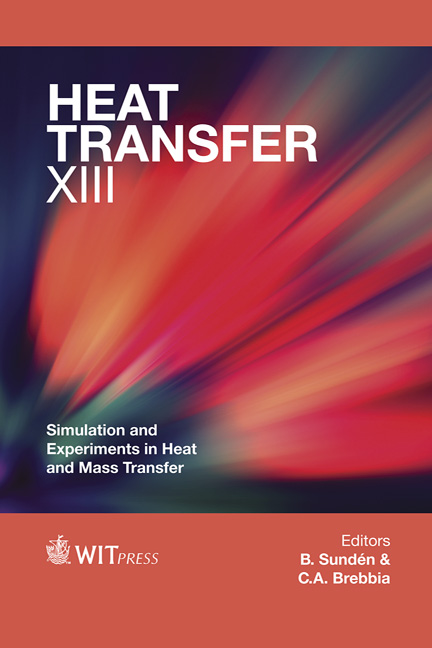Fuel Temperature Estimation And Energy Balance Within An UAV Integral Wing Fuel Tank
Price
Free (open access)
Transaction
Volume
83
Pages
13
Page Range
463 - 475
Published
2014
Size
1,145 kb
Paper DOI
10.2495/HT140401
Copyright
WIT Press
Author(s)
P. Blázquez
Abstract
The endurance of Unmanned Air Vehicles (UAVs) is an essential driver for the design and development of such vehicles. Medium altitude long endurance air vehicles (MALEs) are designed to perform different missions for long periods of time in different altitudes from sea level up to 36 kft. Endurance can be improved by increasing the fuel content and designing high aspect ratio wings to increase the aerodynamic performances. The integral wing fuel tank is defined by the upper and lower skins and the front and rear spars. The only insulation from external air is the skin thickness. On the other hand, wings with a high aspect ratio indicate long and narrow wings resulting in a high surface-to-volume ratio. These two factors lead to a high heat flux between the fuel and external air. Dynamic estimations of fuel temperature along different aircraft missions are needed to evaluate the different fuel requirements (i.e. freezing, fuel injection, cooling, etc.) from the beginning of the project. The present paper describes a dynamic model of a wing fuel tank. It is focused on validating the wing fuel system design from a thermal point of view. It estimates the temperatures and energy balance of the wing fuel along the missions taking into consideration the wing geometry, the different heat transfer effects, as well as the flight conditions and engine fuel consumption. Keywords: simulation, aircraft, fuel, heat transfer, freezing, cooling.
Keywords
simulation, aircraft, fuel, heat transfer, freezing, cooling.





